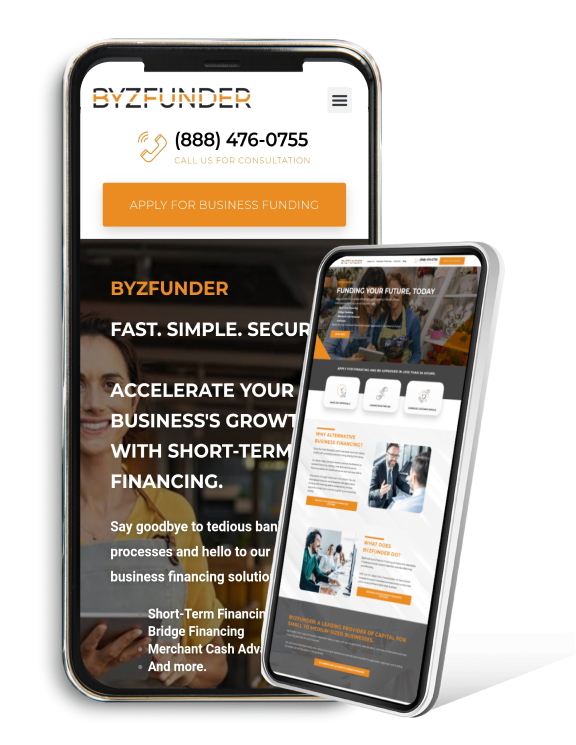Business owners, we want to help you understand the small business borrowing landscape, and that’s why we are sharing a series of guides to help you thrive. Understanding how interest rates are calculated on business loans is crucial to making informed financial decisions.
Whether you’re in the restaurant industry, medical field, trucking, construction, retail, or any other sector, this guide will break down the complex world of interest rates and provide you with actionable insights. So, let’s dive in!
When it comes to business loans, there are several types to consider. Each type has its own characteristics and interest rate calculations. Here are a few common ones:
Term loans are a popular option for small businesses. They involve borrowing a lump sum of money from a lender and repaying it over a fixed term with interest. Interest rates on term loans can be fixed or variable, depending on the lender and the terms of the loan.
Equipment financing is viable if you purchase equipment or machinery for your business. These loans are secured by the equipment itself, which serves as collateral. Interest rates may vary based on factors such as creditworthiness and the type of equipment being financed.
The U.S. Small Business Administration (SBA) offers loan programs to support small businesses. The SBA partially guarantees these loans, making them more accessible to entrepreneurs. Interest rates on SBA loans are typically competitive and depend on the loan program and lender.
To understand interest rates fully, we must touch upon the role of the Federal Reserve (Fed) role. The Fed plays a crucial role in influencing interest rates in the economy, primarily through its monetary policy decisions. One key factor is its control over the federal funds rate, which is the interest rate at which banks lend to each other overnight.
The Fed adjusts the federal funds rate to manage inflation and economic growth. When the economy is growing rapidly, the Fed may raise interest rates to prevent overheating and control inflation. Conversely, the Fed may lower interest rates during economic downturns to stimulate borrowing and spending.
Interest rates are closely linked to inflation. When inflation rises, the purchasing power of money decreases, prompting lenders to charge higher interest rates to compensate for the reduced value of future repayments. Inflation expectations, as well as the actual inflation rate, influence interest rate decisions made by lenders.
Sometimes, small businesses need quick access to funds to address short-term cash flow needs or take advantage of growth opportunities. Here are a few short-term financing options to consider:
A line of credit provides flexibility, allowing you to access funds as needed and repay them as you go. Interest rates on lines of credit can be variable and are typically based on a benchmark rate, such as the prime rate.
If your business has outstanding invoices from customers, invoice financing allows you to borrow against the value of those invoices.
Interest rates are calculated based on factors like your customers’ creditworthiness and the repayment term’s length.
In addition to traditional lenders, alternative lenders are a great option for small businesses seeking financing. Alternative Lenders offer innovative solutions with different interest rate calculation methods that may not directly correlate with Fed rates.
When considering alternative lenders, ByzFunder stands out as a reliable and supportive partner for small businesses. With a focus on personalized service and a deep understanding of the entrepreneurial journey, ByzFunder strives to make the financing process as seamless as possible.
Unlike traditional lenders who rely heavily on credit scores and lengthy application processes, ByzFunder takes a holistic approach to considering applications. We consider factors such as your time in business and monthly revenue. This approach allows us to provide tailored solutions that align with your unique needs and circumstances.
Moreover, our rates are competitive and reflect the risk associated with each funding. While they don’t directly link their rates to the Fed, we take into account broader economic factors and market conditions to offer fair and transparent terms to our borrowers.
As you embark on your loan application journey, stay proactive, ask questions, and seek expert advice when needed. By taking a strategic approach, you can secure the funding necessary to fuel your business’s growth and achieve your entrepreneurial dreams.
So, go forth with knowledge in hand, and may your small business thrive with the support of well-calculated interest rates and strategic financing decisions. Happy borrowing, and here’s to your continued success!
Disclaimer: The information provided in this blog post is for educational purposes only. It is not intended as financial or legal advice. Please consult a professional advisor or lender for personalized guidance based on your circumstances.
